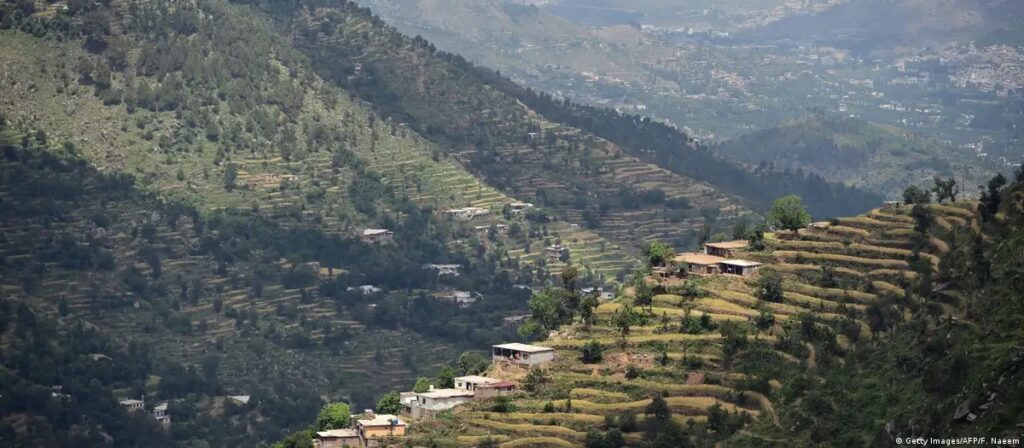By Dr. Majid Khan
The “10 Billion Tree Tsunami” project represented a substantial commitment from Pakistan to tackle environmental degradation through widespread reforestation. Inspired by the global Billion Tree Campaign, this ambitious initiative aimed to plant 10 billion trees across Pakistan, with goals to restore depleted forests, combat climate change, and support biodiversity. Despite its noble aspirations and initial commendations, the project faced considerable challenges, largely due to the complex political landscape of Pakistan.
The 10 Billion Tree Tsunami initiative originated as an expansion of the Billion Tree Tsunami project in Khyber Pakhtunkhwa province, which had successfully planted one billion trees by early 2018. Encouraged by this achievement and international recognition, the federal government adopted this project on a national scale in 2018, aiming to plant ten billion trees by 2023. This project was not merely an environmental effort but was also integrated into Pakistan’s broader commitments to international environmental agreements and sustainable development goals(SDGs). It addressed critical issues like deforestation due to timber smuggling, agricultural encroachment, and unsustainable logging, aiming to rejuvenate these devastated landscapes.
The project was structured with multiple objectives focused on environmental rejuvenation and economic stimulation through sustainable practices. A primary environmental goal was to significantly decrease Pakistan’s carbon footprint by increasing forest cover, which would also help combat land degradation and desertification. On the economic front, the initiative aimed to spur growth in rural areas by creating millions of job opportunities in nursery establishments, tree planting, and forest maintenance. This was expected to improve air quality, reduce energy costs, and enhance local biodiversity, thereby promoting ecological balance and restoring natural habitats critical for maintaining Pakistan’s diverse ecosystems.

From its inception, the project quickly showcased significant progress, planting hundreds of millions of trees across various regions of Pakistan. It effectively mobilized local communities, enhancing environmental awareness and promoting sustainable land management practices. The initiative won international acclaim from environmental groups and governments alike, who praised it as a pioneering model for large-scale environmental conservation. This recognition underscored the project’s potential and set a hopeful tone for its continued success.
The political environment in Pakistan, marked by volatility and frequent power shifts, posed significant challenges to the project. Although initiated with strong governmental backing, the project quickly became a point of contention. Opposition parties criticized its execution, transparency, and the genuine intent behind its lofty claims. This political strife was intensified by frequent changes in regional and local administrations, which influenced the continuity and consistency of the project’s execution.
The project faced countless challenges ranging from political opposition to logistical and financial hurdles. Politically, the initiative was often perceived as a tool for image-building rather than a genuine environmental effort, attracting accusations of corruption and mismanagement. Logistically, the endeavour to plant such a massive number of trees across Pakistan’s diverse geographical and climatic regions presented significant difficulties. Financial sustainability also emerged as a concern, with the need for consistent funding over many years amidst fluctuating economic conditions and dependency on international aid.
Reactions to the 10 Billion Tree Tsunami were mixed across different spectrums of society. While environmentalists and local communities generally supported the initiative, it faced skepticism and criticism from opposition political groups. The media’s role was pivotal in shaping public perception, offering both endorsements and critiques, which highlighted the project’s successes and illuminated its shortcomings.
Political interference significantly undermined the project, with frequent policy shifts, reallocation of resources, and bureaucratic obstacles hampering progress. After Prime Minister Imran Khan was removed from office by a no-confidence vote in parliament, Pakistan’s massive tree-planting initiative faced a serious setback. Historically climate change has not been a strong hold of the incumbent PM Shahbaz Sharif. Meanwhile climate experts are calling on the government of Shehbaz Sharif to continue Khan’s flagship initiative to restore forests.
The politicization of the project’s goals and the inconsistency in government priorities led to fragmented implementation and reduced its effectiveness. This interference illustrated the profound impact political instability can have on environmental initiatives, emphasizing the need for stronger governance structures to shield such projects from political disruption.
The incomplete implementation of the project had extensive environmental, economic, and social repercussions. Environmentally, the failure to meet tree planting targets limited the potential benefits for carbon impounding and biodiversity. Economically, the project fell short of its job creation goals, which hindered economic development in rural areas. Socially, the project’s struggles and perceived mismanagement eroded public trust and dampened enthusiasm for government-led initiatives, which are crucial for the success of large-scale conservation efforts.
Despite facing significant challenges, the 10 Billion Tree Tsunami project marks a critical milestone in environmental conservation, offering important lessons on integrating large-scale environmental projects within political frameworks. For future initiatives, ensuring non-partisan support, enhancing transparency, and maintaining robust public engagement are essential. These strategies will not only help achieve environmental objectives but will also strengthen the resilience of these projects against political and economic challenges, enhancing their effectiveness and ensuring long-term sustainability. The 10 Billion Tree Tsunami remains a beacon of what is possible in environmental conservation, symbolizing the potential benefits and the complex challenges such ambitious projects inevitably encounter.
Author: Dr. Majid Khan a PhD Scholar of Media, qualified Journalist, Academic and Writer; have expertise in analyzing and designing strategy of propaganda, Information warfare and Image Building.
This article is brought to you by London Post, in collaboration with INPS Japan and Soka Gakkai International, in consultative status with UN ECOSOC.






